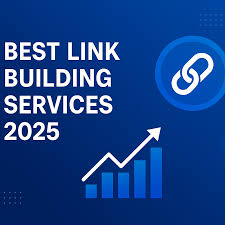Upgrade with the iQOO Z10R on Easy EMIs and make your festive season brighter
- August 28, 2025
- Tech
Upgrade with the i
Pune, August 25: The festive season is the perfect time to purchase a… Read More

Backlinks remain one of the strongest signals search engines use to determine a website’s authority and relevance. In an age of constantly evolving SEO tactics, link-building continues to be a reliable way to improve rankings and visibility. But not all links are created equal, and more isn’t always better. Many site owners are left wondering how much link-building is enough—and when to stop. Understanding your “link-building sweet spot” can help you create a more efficient, effective SEO strategy without wasting time or risking penalties. When done correctly, link-building not only helps rankings but can also elevate your brand’s visibility and credibility online.
What Influences Your Backlink Needs?
Several factors determine how many backlinks your website truly needs. Your industry, competition, domain age, and current authority all play major roles. For example, a newer site entering a competitive niche will require a more aggressive backlink strategy than a well-established site in a less saturated space. Your content quality and internal linking structure also affect how much weight each new backlink carries. This means the answer to “How many backlinks do I need” varies widely from one business to another and must be based on real data, not assumptions. Seasonal changes, algorithm updates, and shifts in user behavior can also influence your backlink needs over time.
Quality vs. Quantity: A Common Misconception
It’s easy to fall into the trap of thinking that more links automatically mean better rankings. However, search engines have become smarter in evaluating link quality. A handful of links from high-authority, relevant sites can outperform hundreds from low-quality directories or spammy blogs. Building a natural link profile with trusted sources is far more sustainable than chasing sheer numbers. The goal should be to earn links that not only pass SEO value but also drive referral traffic and support your brand reputation. Strong backlinks should come from sources your target audience trusts—this ensures your site builds both authority and user engagement.
Benchmarking Against Your Competitors
One of the most practical ways to identify your backlink targets is by analyzing your top competitors. Tools like Ahrefs, SEMrush, or Moz allow you to explore how many backlinks your competitors have and where they come from. Look at the volume, domain authority, and diversity of their link profiles. If competitors consistently rank above you with 200 high-quality referring domains, and you only have 50, there’s your initial gap. This kind of competitive intelligence doesn’t give you a magic number, but it gives you direction and clarity on what you’re up against. Over time, tracking these comparisons can help shape your roadmap and refine your strategy.
Tracking Progress Over Time
Once you begin building links, it’s important to monitor the impact over time. You might not see instant results, especially if your site is relatively new. SEO is a long game, and link-building takes time to yield noticeable improvements in rankings or organic traffic. However, you should track metrics like keyword positions, domain authority, and backlink growth monthly. If your rankings begin to move upward, it may suggest you’re approaching your link-building sweet spot. Additionally, track the sources of new links and how they affect user behavior—metrics like bounce rate, time on page, and conversions offer deeper insight into quality.
Avoiding the Pitfalls of Over-Optimization
While backlinks are powerful, overdoing them can trigger negative consequences. Building too many links too quickly, especially from irrelevant or low-quality sources, may result in algorithmic penalties or manual actions from Google. Additionally, a sudden spike in backlinks with the same anchor text can look unnatural and raise red flags. Sustainable link-building requires balance and moderation. A diversified profile—with varied anchor text, a mix of follow and nofollow links, and organic placements—is far more beneficial in the long term. Remember, link-building should feel like a natural extension of your brand’s growth, not a forced tactic just to chase rankings.
Tailoring Your Strategy to Your Goals
Not every business needs hundreds or thousands of backlinks. If your goal is to dominate national search rankings, you’ll need a much more robust link-building campaign than a local business targeting a specific geographic area. Likewise, if you’re already ranking well but want to solidify your position, you may focus on acquiring links from authoritative niche-specific sources rather than chasing numbers. Instead of asking only, “How many backlinks do I need,” it’s more useful to ask, “What kind of backlinks will help me achieve my goals?” When your strategy is guided by intent and relevance, your backlink profile becomes a true asset to your SEO performance.
Focus on Smart Growth, Not Just More Links
Finding your link-building sweet spot takes thoughtful planning, ongoing analysis, and a willingness to adjust as you go. Rather than fixating on a target number, focus on quality, relevance, and alignment with your overall SEO strategy. By benchmarking against competitors, avoiding common pitfalls, and tailoring your approach to your business goals, you can build a backlink profile that drives real, sustainable results. The answer to “How many backlinks do I need” lies not in quantity alone, but in strategic growth that supports both your visibility and long-term success. In the end, the best link-building is not only effective for SEO—it’s meaningful to your users too.